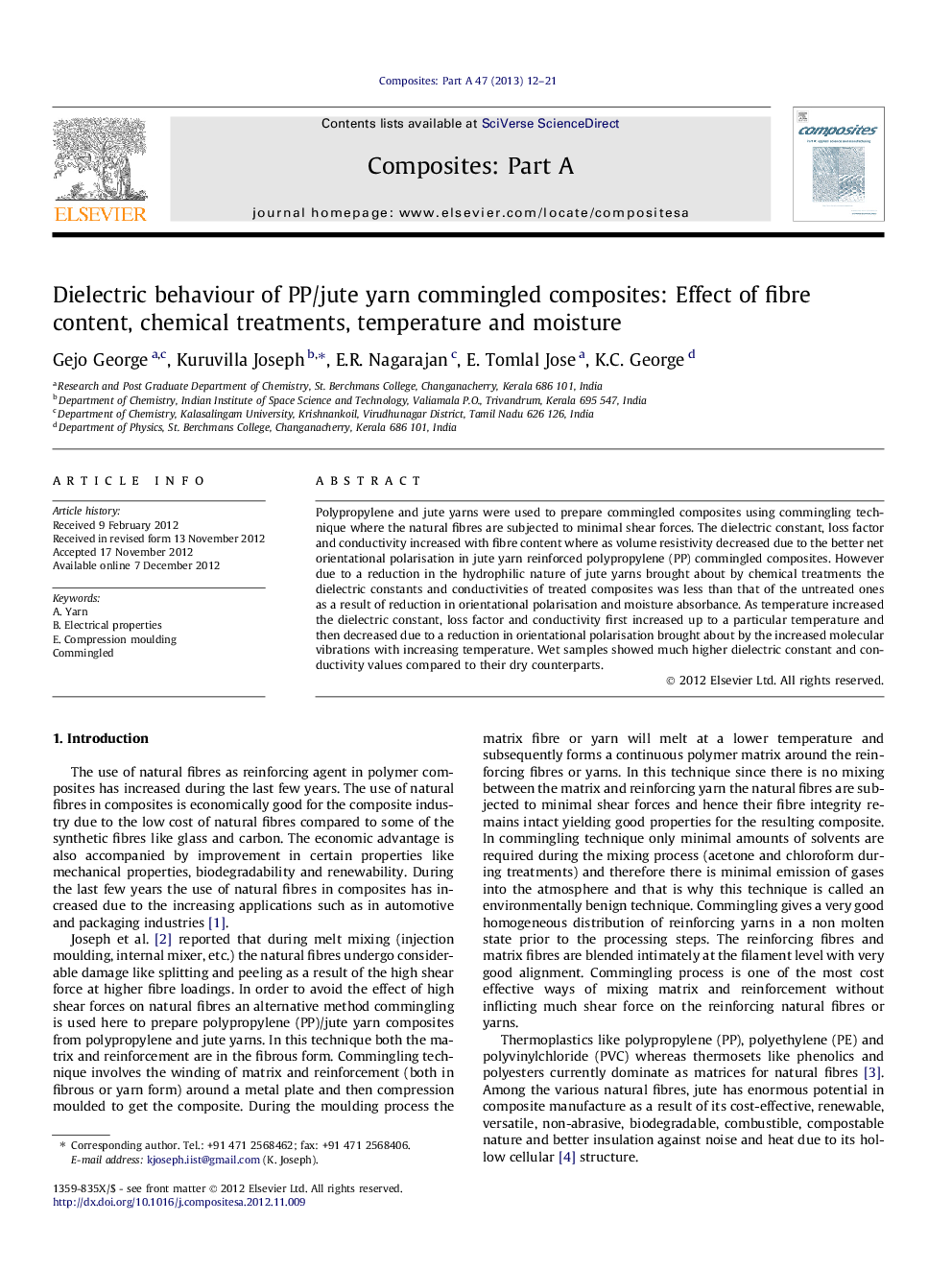| Article ID | Journal | Published Year | Pages | File Type |
|---|---|---|---|---|
| 1466412 | Composites Part A: Applied Science and Manufacturing | 2013 | 10 Pages |
Polypropylene and jute yarns were used to prepare commingled composites using commingling technique where the natural fibres are subjected to minimal shear forces. The dielectric constant, loss factor and conductivity increased with fibre content where as volume resistivity decreased due to the better net orientational polarisation in jute yarn reinforced polypropylene (PP) commingled composites. However due to a reduction in the hydrophilic nature of jute yarns brought about by chemical treatments the dielectric constants and conductivities of treated composites was less than that of the untreated ones as a result of reduction in orientational polarisation and moisture absorbance. As temperature increased the dielectric constant, loss factor and conductivity first increased up to a particular temperature and then decreased due to a reduction in orientational polarisation brought about by the increased molecular vibrations with increasing temperature. Wet samples showed much higher dielectric constant and conductivity values compared to their dry counterparts.
